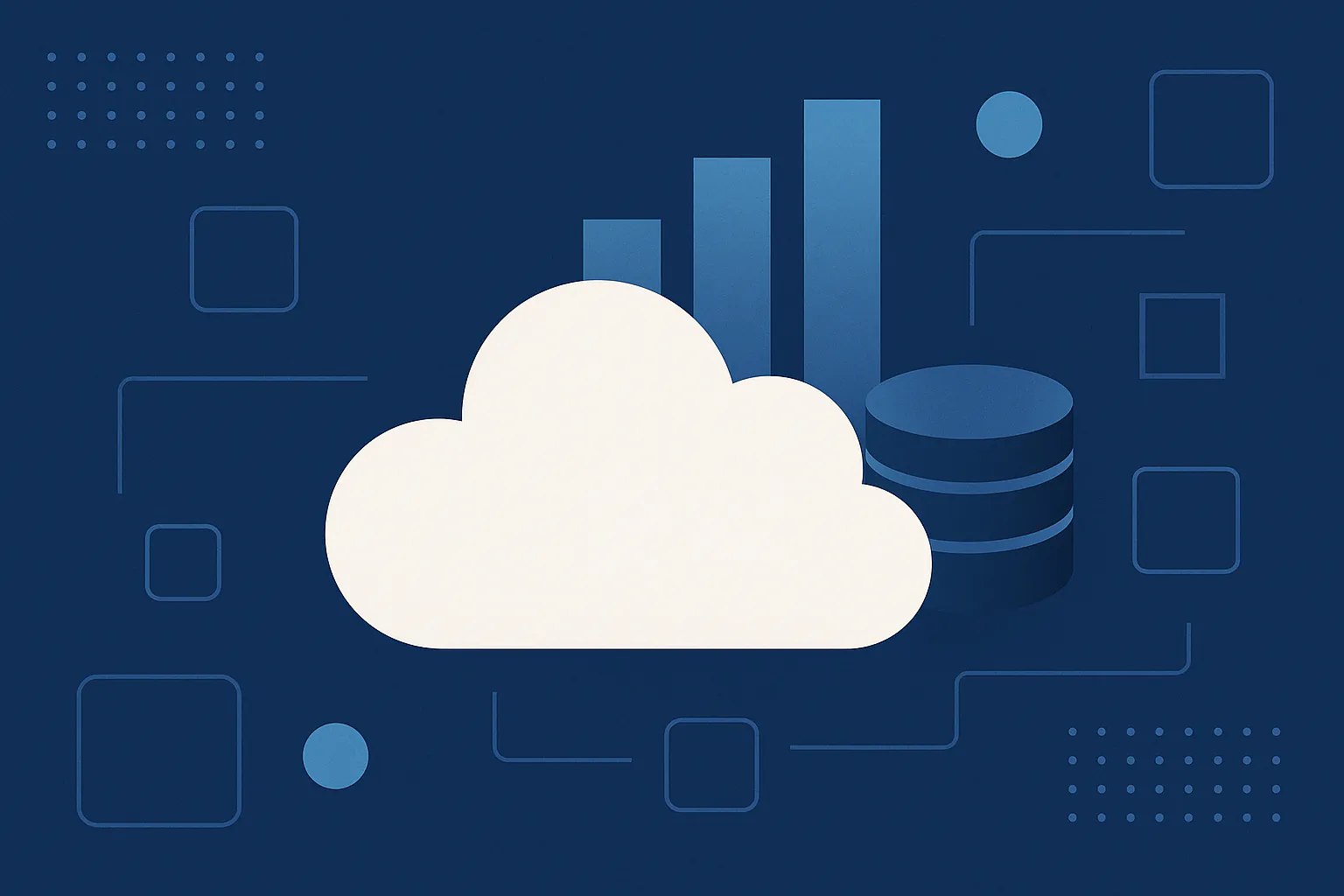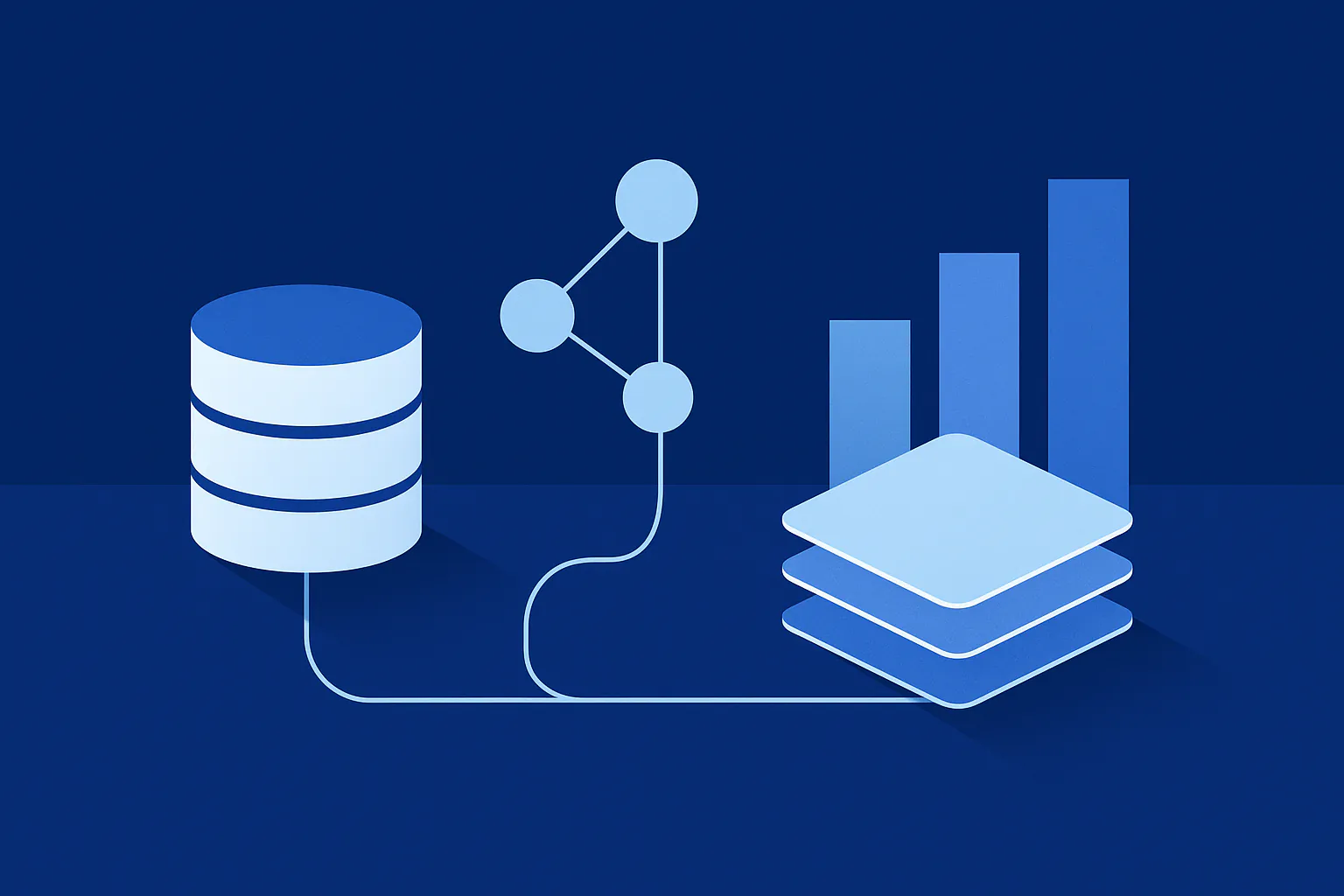Data Platform Capabilities In Microsoft Fabric For Azure Teams
Key Takeaways
- Microsoft Fabric unifies core data platform capabilities so ingestion, storage, modeling, and analytics live in one Azure-based environment instead of scattered services.
- OneLake and lakehouse patterns give you a shared, governed source of truth, making it easier to build reusable models, support real time analytics, and keep Power BI reports consistent.
- Yocum Technology Group helps you plan and pilot Fabric around real outcomes, turning a complex Azure data estate into a clear, staged path toward a standard data platform.

Data platform talk is everywhere, but your pain is simpler. Reports live in too many places, pipelines break at the worst time, and every “simple” dashboard needs manual exports and late-night fixes. This page explains what data platform capabilities you should expect today, how Microsoft Fabric groups them into one SaaS environment, and how Yocum Technology Group helps you move there at a pace that fits your Azure footprint and budget.
If you work with Azure already, think of this as a clear map from many moving parts to one data platform that can grow with you.
What Data Platform Capabilities Mean In Practice
Before you look at tools, it helps to agree on what a modern data platform is supposed to do. Azure’s own data and analytics services are framed around a simple arc: gather, store, process, analyze, and visualize data so you can act on it.
In real terms, strong data platform capabilities cover at least these jobs:
- Bring data in from your key systems on a reliable schedule.
- Land it in storage that is secure, scalable, and query friendly.
- Transform raw data into trusted, reusable models.
- Serve that data to analytics, AI, and line-of-business apps.
- Control access, lineage, and compliance in one place.
- Keep operations visible so you can troubleshoot and tune.
When leaders talk about improving their data platform, they are really asking for fewer brittle spreadsheets and more repeatable, governed paths from source systems to decisions.
The Old Azure Pattern: Many Services, One Data Platform
On Azure today, a typical data platform might combine:
- Azure Data Factory or Synapse pipelines for data ingestion.
- Data Lake Storage for raw and curated data.
- Synapse or dedicated SQL pools for data warehouse workloads.
- Power BI for reporting and analytics.
- Azure security and governance features around it all.
This stack is powerful, but it can feel like a kit of parts. Every new project adds another workspace, another pipeline, another model to track. Teams end up managing the platform almost as much as they use it.
That is the gap Microsoft Fabric is designed to shrink: less time stitching services together, more time using a unified data platform.
Microsoft Fabric As A Unified Data Platform
Microsoft Fabric is a SaaS analytics platform that pulls the core Azure data services into one product experience. Instead of jumping between separate portals, you work in a single environment that shares storage, security, and governance.
At a high level, Fabric brings together:
- OneLake as a shared, open data lake for files and tables.
- Data Factory style data pipelines for ingestion and orchestration.
- Data engineering tools for notebooks and transformations.
- Data warehouse workloads with SQL-based analytics.
- Real time analytics for streaming and log data.
- Power BI integration as the built-in visualization layer.
For teams that already rely on cloud-based data platforms like Microsoft Fabric and Power BI, this means less glue code and more time focusing on models, metrics, and decisions.
Core Data Platform Capabilities In Microsoft Fabric
This section maps the core jobs of a data platform to what Fabric provides out of the box. You can use it as a checklist when you evaluate your current setup.
Data Ingestion And Orchestration
Fabric includes pipeline experiences that feel familiar if you use Azure Data Factory today. You can:
- Connect to databases, SaaS tools, files, and on-premises data sources.
- Build scheduled or event-driven data pipelines.
- Reuse activities for copy, transformation, and control flows.
The goal is simple: move data into OneLake or warehouse workloads on a predictable schedule without hand-built scripts for each new feed.
Central Storage With OneLake And Lakehouse Architecture
OneLake is the shared storage layer for Microsoft Fabric. Rather than spreading data across many separate accounts, you manage one logical lake with workspaces and folders for structure.
On top of that, Fabric supports lakehouse patterns. You can combine:
- Raw zones for unprocessed data.
- Curated zones for cleaned, modeled tables.
- Warehouse-style schemas for analytics workloads.
This gives you the flexibility of a data lake with the discipline of a warehouse, all within one data platform.
Data Engineering And Transformation
Modern analytics depends on repeatable transformations, not one-off queries. Fabric includes data engineering tools so teams can:
- Use notebooks to clean, join, and shape data.
- Build reusable transformations and data pipelines.
- Store results in tables that reporting and AI can share.
The focus is on shared, versioned code rather than logic hidden in desktop tools. That makes change review, debugging, and reuse much easier.
Data Warehouse And SQL Analytics
Many workloads still need classic warehouse behavior: star schemas, strong performance on aggregations, and predictable concurrency. Fabric includes data warehouse capabilities so you can:
- Model facts and dimensions in familiar patterns.
- Run SQL queries over large volumes of data.
- Use semantic models to feed reports and dashboards.
For teams that run their business on reports today, this gives you a clear path from your current SQL warehouse to a more unified environment without losing the shapes analysts know.
Real Time Analytics
Not all data arrives in nightly batches. Logs, telemetry, and event streams are most valuable when you can react quickly. Fabric is built to handle these real time analytics scenarios alongside your batch workloads.
You can ingest streaming data, aggregate it in near real time, and land both detailed and summarized views in OneLake for reporting or alerting.
Built In Data Governance And Security
Governance is where many do-it-yourself platforms start to strain. Fabric uses the same Azure identity, access control, and compliance foundations your security team already understands.
Key points:
- Role-based access control can follow your Azure patterns.
- Workspaces help separate teams, environments, and projects.
- Lineage views show how datasets and reports connect.
- Central policies make it easier to audit who can see what.
Instead of treating governance as an afterthought, Fabric makes it part of the core data platform capabilities.
How Fabric Fits Your Azure Data Platform
If you already use Azure, Microsoft Fabric is not a separate island. It is one more way to modernize your data estate while keeping Azure as the backbone. YTG already helps clients unify data in the cloud so they can gather, store, process, analyze, and visualize information in one place.
Common patterns include:
- Fresh starts for new analytics programs. When teams are building a new analytics platform or replacing legacy BI, Fabric offers one environment instead of a long list of Azure resources to assemble.
- Stepwise data estate modernization. You can keep core workloads on Azure SQL, Synapse, or other services while shifting specific analytics projects into Fabric as they come up.
- Tighter integration with Power BI. If Power BI is already your reporting tool of choice, Fabric gives you a more direct path from raw data to semantic models and dashboards.
The key is to treat Fabric as an option in your architecture, not a forced replacement for everything you run today.
The Fabric Capability Map: Six Jobs To Line Up
To decide whether Microsoft Fabric should be your main data platform, it helps to review six core jobs:
- Ingest. How you pull data from source systems on a schedule or in real time.
- Store. Where that data lands, how it is structured, and how it scales.
- Model. How you transform raw data into trusted tables and metrics.
- Analyze. How users explore, visualize, and share insights.
- Govern. How you manage access, lineage, and compliance.
- Operate. How you monitor pipelines, performance, and cost.
Fabric provides one place to handle all six. When you compare platforms, use these jobs as your scorecard instead of feature lists.
Typical Use Cases For Microsoft Fabric As A Data Platform
Here are scenarios where Fabric usually fits well:
- Executive and Operational Dashboards. You want a single pane of glass that pulls from ERP, CRM, line-of-business apps, and external feeds without building a custom integration layer for each one.
- Self-Service Analytics With Guardrails. Analysts need freedom to explore data, but IT wants consistent, governed models in the background so numbers match.
- AI and Machine Learning On Shared Data. You plan to add AI workloads on top of your data platform and need a shared lake that keeps training, evaluation, and reporting close together.
- Modernizing Legacy Reporting. Existing reports live in static tools or custom scripts, and you want to move them into a cloud-based, governed environment without losing history.
When your needs fall into these categories and you already run on Azure, Fabric becomes a strong candidate for your standard data platform.
Capability Checklist: Are You Ready For Microsoft Fabric?
Use this quick checklist to review your current data platform capabilities and gaps. You do not need every box checked before you start, but the answers will shape scope and timing.
- Do we know our top 10 data sources and who owns them?
- Do we have at least a basic data catalog or list of key tables and reports?
- Are security groups and roles in Azure AD reasonably clean?
- Do we understand which reports are “system of record” for finance, sales, and operations?
- Do we have someone who can own pipelines and data models, not only dashboards?
If most answers are “yes,” you are ready to plan a Fabric pilot around one real business outcome, such as a shared revenue dashboard or unified operations view. If not, YTG can help you put the foundations in place first.
How Yocum Technology Group Helps With Fabric And Data Platforms
Yocum Technology Group is a Microsoft Partner that already helps clients modernize legacy systems, migrate to Azure, and unlock insights through cloud-based data platforms like Microsoft Fabric and Power BI.
In a typical engagement, the work focuses on:
- Clarifying outcomes. Agreeing on the decisions and metrics that matter, not just tooling.
- Mapping your data estate. Documenting current sources, integrations, and reports.
- Designing the target architecture. Deciding how Microsoft Fabric, Azure services, and Power BI will work together for your environment.
- Building a first slice. Shipping one meaningful workload in Fabric to prove the value and refine patterns.
- Scaling with guardrails. Expanding usage with shared models, governance, and DevOps practices so adoption stays manageable.
The result is a data platform that feels less like a pile of tools and more like a reliable part of your daily operations.
Next Steps: Plan Your Data Platform On Fabric
If your team is wrestling with scattered reports, manual exports, or unclear ownership of data, you do not need another disconnected dashboard. You need a plan for your next generation data platform.
Microsoft Fabric offers one path to bring ingestion, storage, modeling, analytics, and governance into a single, Azure-aligned environment. Paired with Power BI and the rest of your Azure estate, it can turn data from a side project into a shared asset your team can trust.
Yocum Technology Group helps you decide where Fabric fits, build a first workload that matters, and grow your data platform capabilities without slowing the rest of your roadmap. When you are ready, their team can review your current environment and sketch a clear, staged plan for moving the right pieces into Microsoft Fabric.




